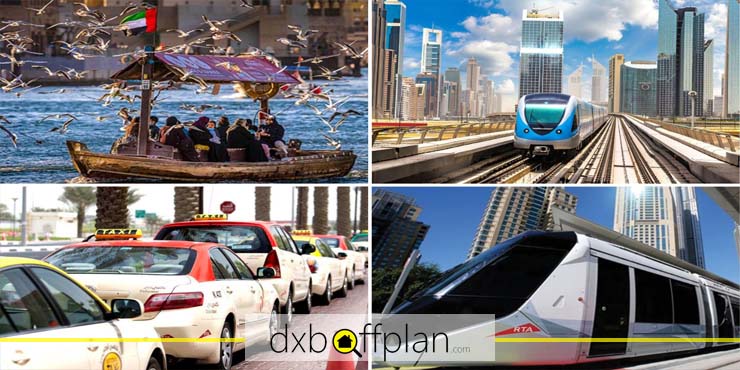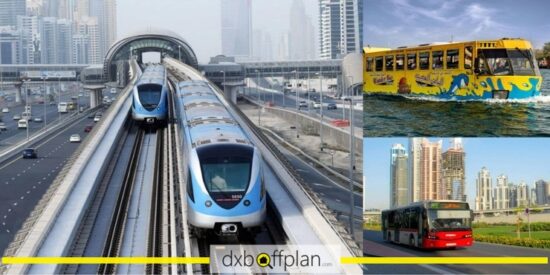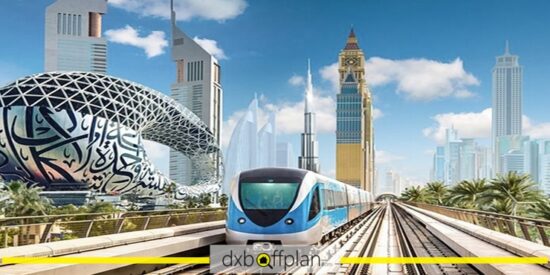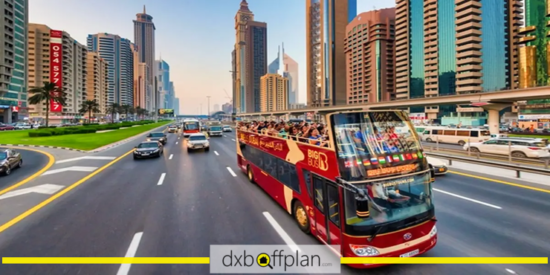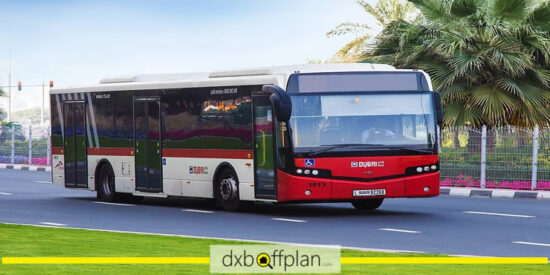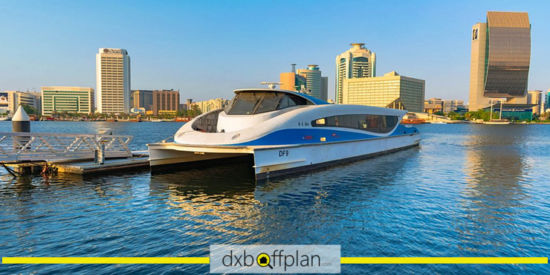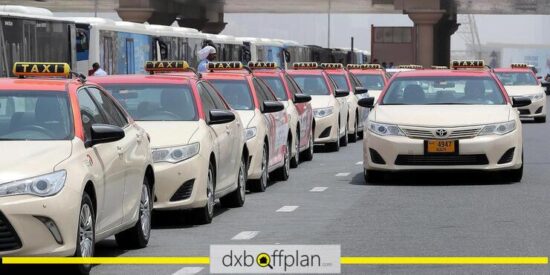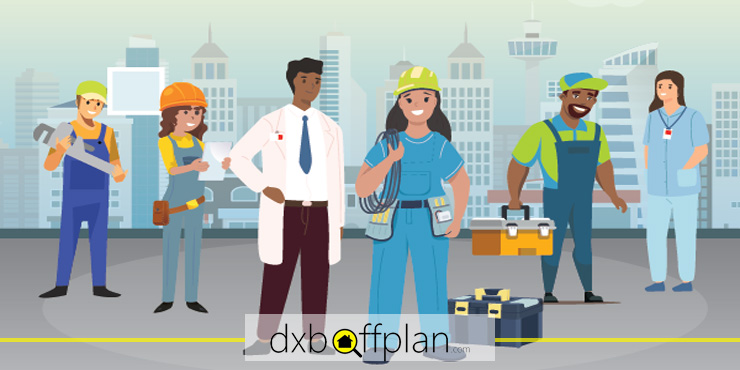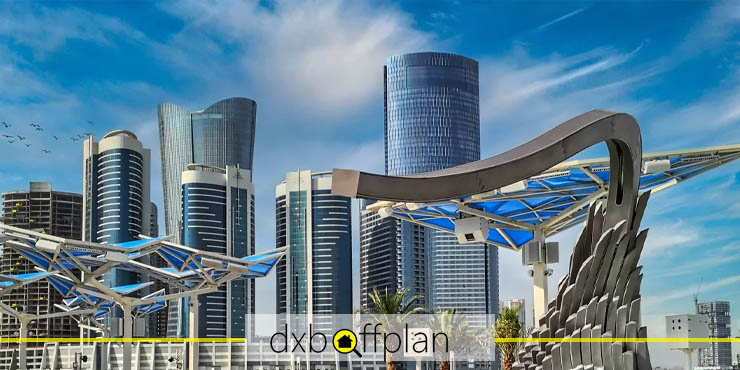How to Use Dubai’s Public Transportation
Tourists and residents alike, recognise and adore Dubai for its luxury vibe, modern skyline, and cutting-edge infrastructure. But do they know what goes on beneath this glamorous exterior? How about the well-organized and efficient public transportation in Dubai? For all those visiting or living in Dubai, there are many affordable ways to commute, in fact, there are a variety of transit options that make getting around both easy and entertaining. From the modern Dubai Metro to the extensive bus network, water taxis, and ride-hailing services, finding your way through the city without a car is entirely possible. In this guide by Dxboffplan, we’ll break down the best ways to travel around Dubai using public transport, helping you save time, money, and energy while enjoying everything this vibrant city has to offer.
Learning About Dubai’s Methods of Public Transportation
Before heading to Dubai’s Public Transportation, one needs to gain a deeper understanding of Dubai’s size and attraction. Dubai, despite being about 20 times smaller in size compared to Tehran, houses about 3.5 million citizens. What’s even more surprising, however, is an extra 16 million visitors annually, all drawn towards Dubai’s tempting lifestyle and opportunities. Give the Colorful World of Dubai’s Nightlife a shot and you’ll know the hype isn’t baseless at all.
Owing to Dubai’s small size and considerable number of residents and visitors, its concentration of tourist attractions is high and we can safely assume most of them have not rented a car to get around the town. Dubai’s diverse public transportation options is an ideal opportunity for them to experience a variety of vehicles with different costs and speed, especially for those with a liking for water taxis, boats, and even ferries! Let’s explore the options in more detail now:
Dubai Metro
Dubai’s Metro system, similar to what one expects in most developed cities, is one of the most effective Public Transportation methods for moving around Dubai. You can choose to enjoy its low price or the delightful fact that it covers most tourist attractions of the city. You’ll also have the added value of free access to the web, modern cabins that are amongst the most advanced in the world. You can watch outside in peace, owing to an effective cooling system in the train.
Dubai Metro’s types of carriages
Each Dubai Metro train has five carriages, four of them Silver Class and open to general use for everyone. One carriage is partitioned in two: one for kids and women and one for the Golden Class, or First Class passengers. As one can probably imagine, Golden Class is a bit pricey and has a nicer seat and view. In case of boarding Golden Class with no valid ticket, a 100 dirhams penalty will follow.
Dubai Metro Amenities
We have mentioned free use of Dubai Metro’s Wi-Fi, but services go a little deeper here. All the stops have emergency phones, and all offer an elevator and toilet facilities for disabled passengers. Over 3,000 CCTV cameras cover Dubai Metro, with high security and many signposts and people in charge helping visitors with their desired destination.
Dubai Metro Map
Dubai boasts two metro routes, distinguished with green and red colors. There are 20 stops for the green one (starting at Etisalat and arriving at Dubai Healthcare City) and 29 stops for the red one (starting at Rashidiya and arriving at Jebel Ali). Union and Khalid Bin Al Waleed stops serve both routes. In case you wish to visit major attractions such as The Majestic Towers of Dubai, remember these stops, for they are most convenient for to get yourself there:
- Zabeel Park stop: Popular for visiting Dubai Frame, accessible via the red one at Max Fashion stop
- Dubai World Trade Centre: Has lots of exhibitions, accessible via the red line at Al Ras.
- Burj Khalifa and Dubai Mall: Accessible via red line at Burj Khalifa/Dubai Mall.
- Mall of the Emirates: one of the best shopping centers in Dubai, clearly visible in the metro map.
- Al Fahidi Historical District: For history lovers, accessible via the green line at Al Ghubaiba.
Dubai Metro Ticket Prices
Dubai Metro cannot be purchased with cash, nor with regular credit cards. There is only one way of using it, and that is by purchasing a Nol Card, such as Istanbul Kart and Iranian metro cards. You can buy a Nol Card at any one of Dubai’s metro stops, including approved sales locations, or shops in convenient stores. Use of the metro varies with the type of Nol Card and the zone covered, costing about 3 to 15 dirhams.
Dubai Tram
Dubai trams are one of the city’s most secure means of transport and identical in usage to the metro system. Even though Asia’s first tram was created in India, the Dubai tram is the first modern tram in its continent and is equipped with amazing features. Like the metro, it is made up of three types of wagons: one for women and children, one general, and one Golden Class. In Golden Class, chairs are covered with leather, and passengers enjoy a greater view of the city.
Dubai Tram Ticket Prices
Similar to Dubai’s metro, trams here only accepts Nol Cards. Three dirhams will be deducted off your Nol Card for each tram trip regardless of your trip’s duration. That is in contrast to payments you’ll make for the bus, taxis, and metro, whose payment is in terms of distance.
Dubai Bus
Without a shadow of a doubt, Dubai’s bus service is not only user friendly but effective. Let’s have a deeper analysis of Dubai’s bus system and its offerings:
Wide Coverage
Dubai’s bus service covers most of Dubai, including renowned touristic locations and residential locations, so that anyone can access any location in Dubai with ease.
Interconnectivity with Metro and Tram
Interconnectivity with Dubai’s tram and metro networks is one of Dubai’s bus network’s greatest assets. Dubai’s 35 bus routes provide passengers with direct access to metro stops, so that anyone can switch between these effective methods of transportation with ease.
Plus, for those in a rush, Dubai’s bus service boasts 8 high-speed lanes that make their trip shorter, particularly during rush-hour times.
Modern Fleet and Amenities
Dubai’s buses provide modern features and designs to make traveling more comfortable for their passengers. Dubai’s buses have air-conditioning, a necessity in Dubai’s hot climes, and even free Wi-Fi for those using them. There is cozy seating, and even disabled access, with low floors and wheelchair provisions.
Cost-effective Travel
Dubai bus fare must be paid through a smart Nol Card, which we also introduced before. The estimated cost for Dubai’s bus system is zonal, and the price for a journey varies with the zone traveled through. Dubai bus fares range between 3 dirhams and 15 dirhams, making it one of Dubai’s cheapest transportation options.
Longer-Night and Weekend Schedules
For passengers having to travel in the dead of the night, Dubai’s bus system is there with extended services. Most Dubai buses are still operational between 4:30 a.m. and midnight, but some even run 24 hours a day. That includes the public holidays and events, too.
Water Transport in Dubai
Water transport is not only a necessity sometimes but a source of entertainment for many as well. For a glimpse of Dubai’s expansive coastlines, water transport can be a perfect and rare chance to access many of Dubai’s best attractions. Dubai’s public water transport entails a range of methods, discussed below:
Dubai Ferry
Dubai Ferry is a perfect way to explore Dubai’s heritage and coastal beauty, offering a relaxed and scenic water journey. There are six routes, and via them, the ferry gets you to a range of Dubai’s key locations, offering a perfect way of travelling for visitors and Dubai citizens alike.
Cost of Dubai Ferry
Payment for Dubai Ferry can be in cash, via credit card, or with Nol Card, providing choices to all aboard. The cost varies between 25 and 75 dirhams, and all those over five years old must have a ticket in order to board.
Dubai Ferry, ideal for heritage and coastal tours, but doesn’t go through city canals. Dubai’s water bus system alone runs in them. For a day trip down the coast, Dubai Ferry brings a new perspective to Dubai’s rich heritage and modern architectural marvels.
Dubai Water Taxi
Dubai Water Taxi is an ideal way to move about in the city, bypassing the tedious traffic, especially during rush hours. This is a quick alternative compared to other options, running through key locations such as Palm Jumeirah, Dubai Marina, Dubai Creek, and Dubai Canal. With 44 stops overall, Dubai Water Taxis have widespread service through the city.
The water taxis operate between 10 a.m. and 7 p.m., daily, offering a convenient service for visitors and locals alike. Zone 1 takes Dubai Marina to Palm Jumeirah, and Zone 2 takes Dubai Creek and Dubai Canal. All water taxis are equipped for passenger comfort, with powerful AC, recliner chairs, and in-car screens. There is a capacity for 10 passengers in each taxi, offering a private and comfortable journey through Dubai’s canals and waterways. With an average cost of 2 dirhams per stop, Dubai Water Taxi is not only convenient but a budget-friendly option for discovering and enjoying Best Beaches in Dubai.
Dubai Water Bus
Dubai water buses offer a one-of-a-kind mode of transportation, a first for Dubai and for the region of the Middle East. As amphibian automobiles, Dubai’s water buses can drive over and through water, offering a convenient and accessible form of transportation in Dubai. Affordability is one of its greatest appeals, with a price range of 3 to 11 dirhams.
The water bus service runs principally between Dubai Marina and Bluewaters Island beaches, offering a view and a convenient route over and through water. With a 12 to 20 minute interval, the buses run regularly and with little down time in between.
From 10 a.m. to 11 p.m., Monday through Friday, and extended till midnight during holidays and events, Dubai’s water bus service runs regularly, offering a convenient, view-filled, and efficient journey through Dubai’s waterways.
For visitors and visitors, for a convenient, budget-friendlier, and view-filled journey through Dubai’s waterways, Dubai’s water bus is a convenient and accessible option.
Dubai Taxis
Dubai’s dynamic taxi system is one of the best parts of its transportation infrastructure. With a variety of taxi options, getting about Dubai is convenient and accessible. Dubai boasts private and government-regulated taxis. Government taxis, with a cream-colored exterior and specific roof colors (pink for female passengers, for example), form a reliable alternative. Private taxis can be booked through travel apps, presenting a convenient alternative for not so budget-conscious travellers and investors moving around Dubai.
Dubai government taxis have meters, and, therefore, a rise in price can occur with distance and duration traveled. Little pricey when you compare it to public transportation, taxis form a direct, door-to-door service for added comfort and ease.
Knowing How Much a Taxi Costs
Government taxis have a base fee and can vary with daytime (8 AED between 6:00 AM and 10:00 PM and 9 AED at any other times). Booking a taxi in advance through a hotel, for example, will have a starting fee of 12 AED. As an additional fee, the metered price will cost 1.82 AED for each kilometer traveled. For long trips, such as Dubai to Sharjah, a price of 200 AED can be expected.
For those new in Dubai, planning for transportation is a must. For a taxi service, budget 70 AED to several hundred AED a day, but with a mix of taxi and public transportation including bus and metro, you can manage to pay less.
Final Words
Mastering the use of public transportation in Dubai is key to seamlessly integrating into the city’s dynamic lifestyle. With a range of options including Dubai’s efficient and sleek metro, widespread bus routes, and convenient taxi service, you’ll know that commuting in Dubai is flexible and convenient.
For those new to the town and wondering about the Dubai property prices, having a deep familiarity with Dubai’s public transportation can have a profound effect on one’s quality of life and entertainment options. Finding efficient transportation routes can make life easier and save you a considerable amount of money. It is right about time to begin using Dubai’s public transportation system to enjoy all this fabulous town has in store for you.
frequently asked questions
Dubai's public transportation system consists of a metro, bus, taxi, and water taxi. Dubai's metro is a convenient and efficient service with its widespread service, connecting city hotspots, with bus routes providing access to unserviced areas. There is also the convenient, but pricey option which is private or government taxis. You can also use alternatives such as water taxis providing scenic routes over Dubai’s waterways.
New immigrants can buy a Nol Card at any one of Dubai’s metro stops, including approved sales locations, such as shops in convenient stores. Nol Card is a necessity when visiting or living in Dubai for use in public transportation, including the metro, bus, and water taxi. There is a variety of Nol Cards, such as Red, Silver, Gold, and Platinum, with various options and incentives included with each.
Dubai's public transportation fare system is measured in terms of zones traveled through. The metro and bus systems use a zone-based fare system where the cost increases with the number of zones crossed. For taxis, fares start with a base rate and increase with distance traveled. Using a Nol Card can simplify fare payments and offer discounted rates compared to cash.





